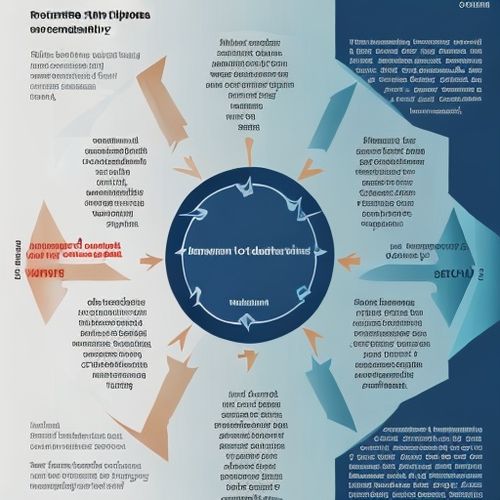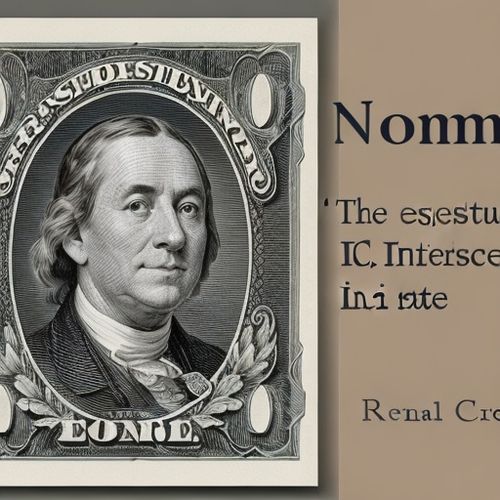Interest rates are the lifeblood of modern economies, influencing everything from personal savings to global investment flows. Yet beneath the surface of this seemingly straightforward concept lies a crucial distinction that shapes financial decisions: the difference between nominal and real interest rates. While most people focus on the advertised or nominal rate, the real interest rate—adjusted for inflation—reveals the true cost of borrowing or the actual yield on savings. This distinction isn’t just academic; it has profound implications for investors, policymakers, and everyday consumers navigating an increasingly complex financial landscape.
The nominal interest rate is the figure most familiar to the public—the percentage banks offer on savings accounts or charge for loans. It’s the number plastered on billboards and bank websites, the one that catches the eye of a borrower comparing mortgage offers or a retiree hunting for higher yields. But this rate tells only half the story. Imagine locking money into a one-year certificate of deposit (CD) at a 5% nominal rate, only to discover inflation has surged to 6% during that period. In purchasing power terms, you’ve effectively lost money despite the seemingly attractive nominal return. This is where the real interest rate enters the picture, cutting through the illusion created by nominal figures to reveal economic reality.
Inflation acts as a silent thief, eroding the value of money over time, and real interest rates account for this stealthy drain. Calculated by subtracting the inflation rate from the nominal rate, the real interest rate exposes whether money genuinely grows or shrinks in purchasing power. During periods of high inflation, nominal rates might appear generous while real rates languish in negative territory—a scenario that punished savers throughout the 1970s oil crisis and more recently during the 2022 inflationary spike. Conversely, unusually high real rates, like those engineered by Paul Volcker’s Federal Reserve in the early 1980s, can crush borrowers while rewarding those with cash to invest.
The relationship between these two rates creates subtle but powerful economic effects. When real interest rates turn negative—a frequent occurrence in the post-2008 era of unconventional monetary policy—they effectively encourage spending and discourage saving. This dynamic explains why central banks sometimes tolerate negative real rates to stimulate sluggish economies. The European Central Bank’s negative rate policy and the Federal Reserve’s prolonged near-zero rates after the Great Recession deliberately pushed real rates into negative territory, hoping to jolt businesses and consumers into action rather than letting money stagnate in accounts.
Market participants who ignore the nominal-real distinction risk serious miscalculations. Bond investors focusing solely on nominal yields might overlook how inflation could devour their returns. Homebuyers comparing mortgage rates across decades must adjust for inflation to make meaningful comparisons—a 7% nominal rate in a low-inflation environment like the early 2010s was far more burdensome than the same rate during the high-inflation early 1980s. Even corporate finance departments must consider real rates when evaluating investment projects, as the true cost of capital depends on inflation-adjusted figures rather than headline numbers.
The interplay between these rates also reveals much about an economy’s health. Persistently high real rates may signal tight monetary policy or strong demand for capital, while negative real rates could indicate loose money or weak investment opportunities. Japan’s experience with near-zero nominal rates and occasional deflation has produced positive real rates at times despite rock-bottom nominal figures—a paradox that has shaped the country’s unique economic trajectory. Similarly, emerging markets often combine high nominal rates with high inflation, resulting in real rates that might not look as attractive as the eye-catching nominal figures suggest.
Financial innovation has introduced new wrinkles to this dynamic. Inflation-indexed bonds like U.S. TIPS (Treasury Inflation-Protected Securities) explicitly adjust principal and interest payments for inflation, effectively locking in a real yield from purchase. These instruments make the nominal-real distinction concrete rather than abstract, allowing investors to hedge against inflation risk directly. The growing market for such products reflects increasing awareness that nominal rates alone don’t tell the full story, especially in an era when central banks have demonstrated their willingness to let inflation run hot under certain conditions.
Understanding this duality becomes especially crucial during economic turning points. When inflation begins rising after a period of stability, the lag between nominal rate adjustments and price increases can create misleading signals. The Federal Reserve’s slow response to rising inflation in 2021 temporarily pushed real rates deep into negative territory—a hidden stimulus that continued fueling demand even as policymakers began discussing tightening. Only when nominal rates rose faster than inflation did real rates begin normalizing, with profound effects across asset classes from stocks to cryptocurrencies.
The nominal-real gap also explains why international capital flows don’t always chase the highest nominal rates. Investors sophisticated enough to calculate real returns might favor a country offering 4% nominal interest with 1% inflation over another boasting 8% nominal rates amid 6% inflation—both scenarios offer roughly 3% real returns, but with vastly different risk profiles. This calculus explains why capital doesn’t simply flood to the nations with the highest headline rates, and why currency values don’t always move in lockstep with nominal rate differentials.
For ordinary consumers, grasping this distinction can prevent costly mistakes. Chasing a high-yield savings account offering 4% when inflation runs at 5% means losing purchasing power despite the apparent gain. Similarly, taking on debt during periods of negative real rates—when inflation erodes the real value of future repayments—can be strategically advantageous for major purchases. The most financially literate households and businesses monitor both nominal and real rates when making saving, borrowing, and investment decisions.
As monetary policy frameworks evolve, the relationship between these rates continues to generate surprises. The Federal Reserve’s 2020 shift to average inflation targeting explicitly acknowledged that periods of above-target inflation might follow periods of shortfall—a policy that implies more frequent episodes of negative real rates. Meanwhile, the growing discussion around central bank digital currencies (CBDCs) raises questions about how these new instruments might affect the transmission between nominal policy rates and real economic conditions in uncharted ways.
The fundamental truth remains: in finance as in life, what matters isn’t always what first meets the eye. The nominal rate commands attention with its boldface type, but the real rate—quietly adjusted for inflation’s erosive effects—determines actual prosperity or hardship. From retirees protecting their nest eggs to treasury managers allocating billions, those who look beyond nominal figures to understand real returns gain a decisive edge in financial decision-making. In an era of economic uncertainty and policy experimentation, this distinction has never been more vital to comprehend.

By Noah Bell/Apr 10, 2025

By Victoria Gonzalez/Apr 10, 2025

By John Smith/Apr 10, 2025

By Sarah Davis/Apr 10, 2025

By James Moore/Apr 10, 2025

By John Smith/Apr 10, 2025

By Ryan Martin/Apr 10, 2025

By Benjamin Evans/Apr 10, 2025

By Emma Thompson/Apr 10, 2025

By Megan Clark/Apr 10, 2025

By Thomas Roberts/Apr 10, 2025

By Noah Bell/Apr 10, 2025

By George Bailey/Apr 10, 2025

By Daniel Scott/Apr 10, 2025

By Benjamin Evans/Apr 10, 2025

By Amanda Phillips/Apr 10, 2025

By Sophia Lewis/Apr 10, 2025